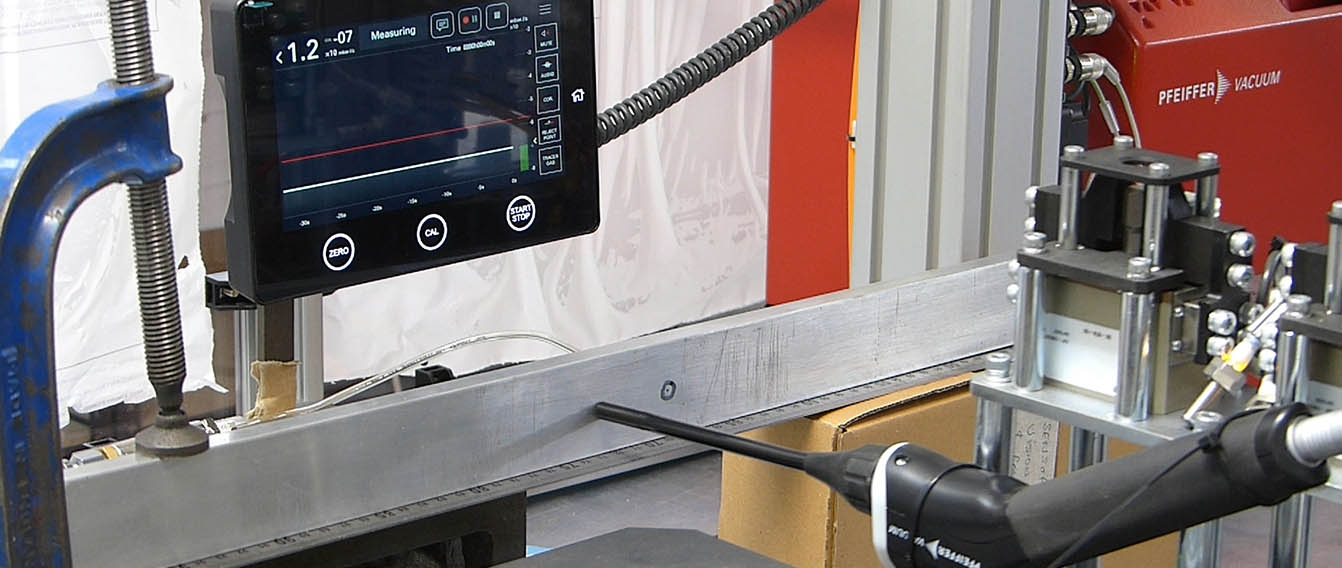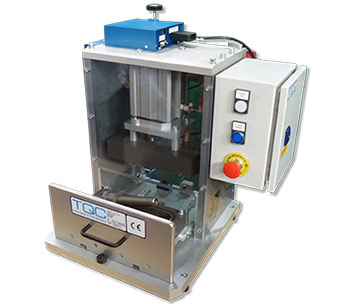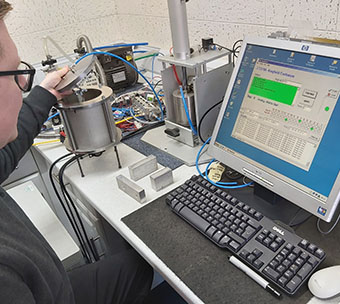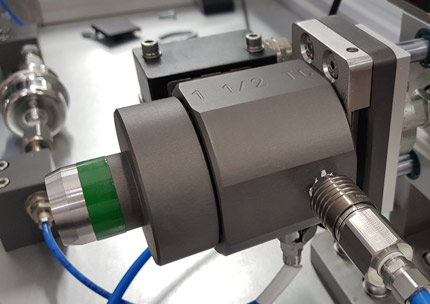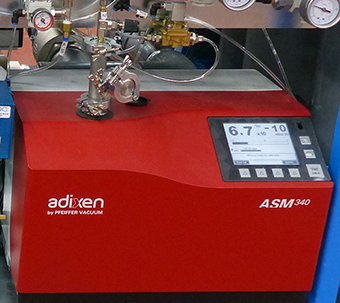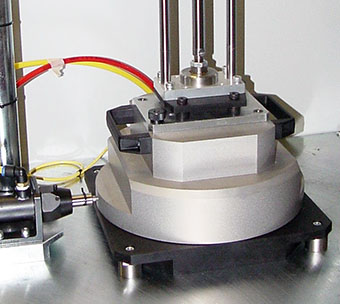Helium sniffing is a method used for leak testing of larger volumes where the vessel cannot be subjected to high vacuum or it is important to identify exactly where the leak is located. TQC has applied this technique to automated test systems to leak test large fuel tanks in Aircraft wings, other large vessels and complex piping structures by either handheld sniffers or mounting the sniffer probes onto robot arms to perform automatic helium sniffing.
TQC was asked to provide proof of the viability of the test method for the automatic leak testing of fabricated containers instead of alternative methods such as underwater leak testing. The content within this webpage shows a demonstration of how a helium leak set to 2×10-5 atm.mm3/sec can be detected using a high flow helium sniffer.
The demonstration test shown here uses a servo axis to move the sniffer probe past a known leak with the remote mass spectrometer panel indicating the leak visually and audibly. This was used to give a clear indication of the linear speed. In practice, the sniffer can be mounted onto a robot to verify that large welded or assembled structures with seals do not leak or where the leaks are located.
It takes a few seconds for the sniffed gas to get from the tip of the sniffer probe to the detecting instrument, so if the exact location of the leak is needed this can be tracked back as necessary knowing where the sniffer probe was located a few seconds beforehand.
The known leak used was set up to 2×10-5 atm.mm3/sec so that 1% helium concentration could be used giving the equivalent leak rate is 2×10-3 atm.mm3/sec. The advantages of using 1% helium are that when testing large volumes or applications where helium reuse is not practical the running costs are reduced.
Varying traverse speeds from 50mm/sec to 300mm/sec were trialled so that we could determine the speed that could be used for any automatic helium sniffing application. At 50mm/sec a leak equivalent to 1×10-5 atm.mm3/sec was detected. A leak rate equivalent to 2×10-5 atm.mm3/sec could be detected at up to 200mm/sec. A funnel around the sniffer probe was tested and this changed the characteristics of the leak test signal (flattened the curve).
A full video showing all traverse speeds from 50mm/s to 200mm/s can be seen on our video page but example captures and a short clip is shown below. If you have an application that this technique would suit, contact TQC’s engineering teams to discuss it’s possibilities.
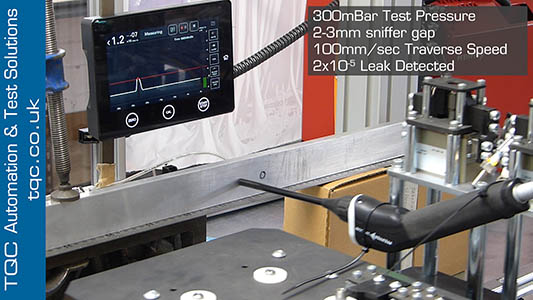
100mm per sec 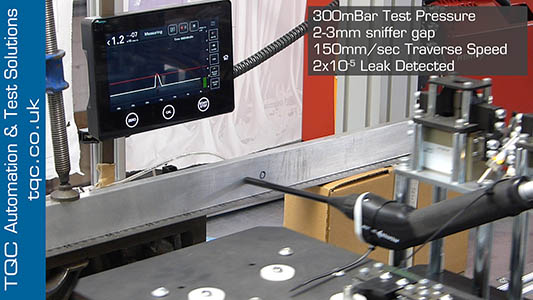
150mm per sec 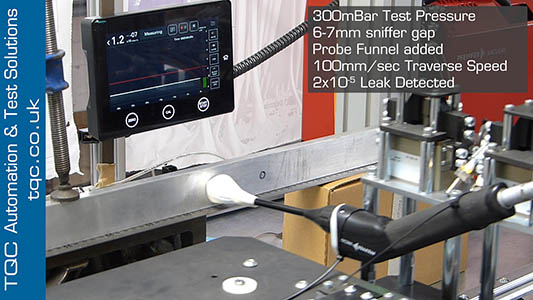
100mm per sec with funnel


